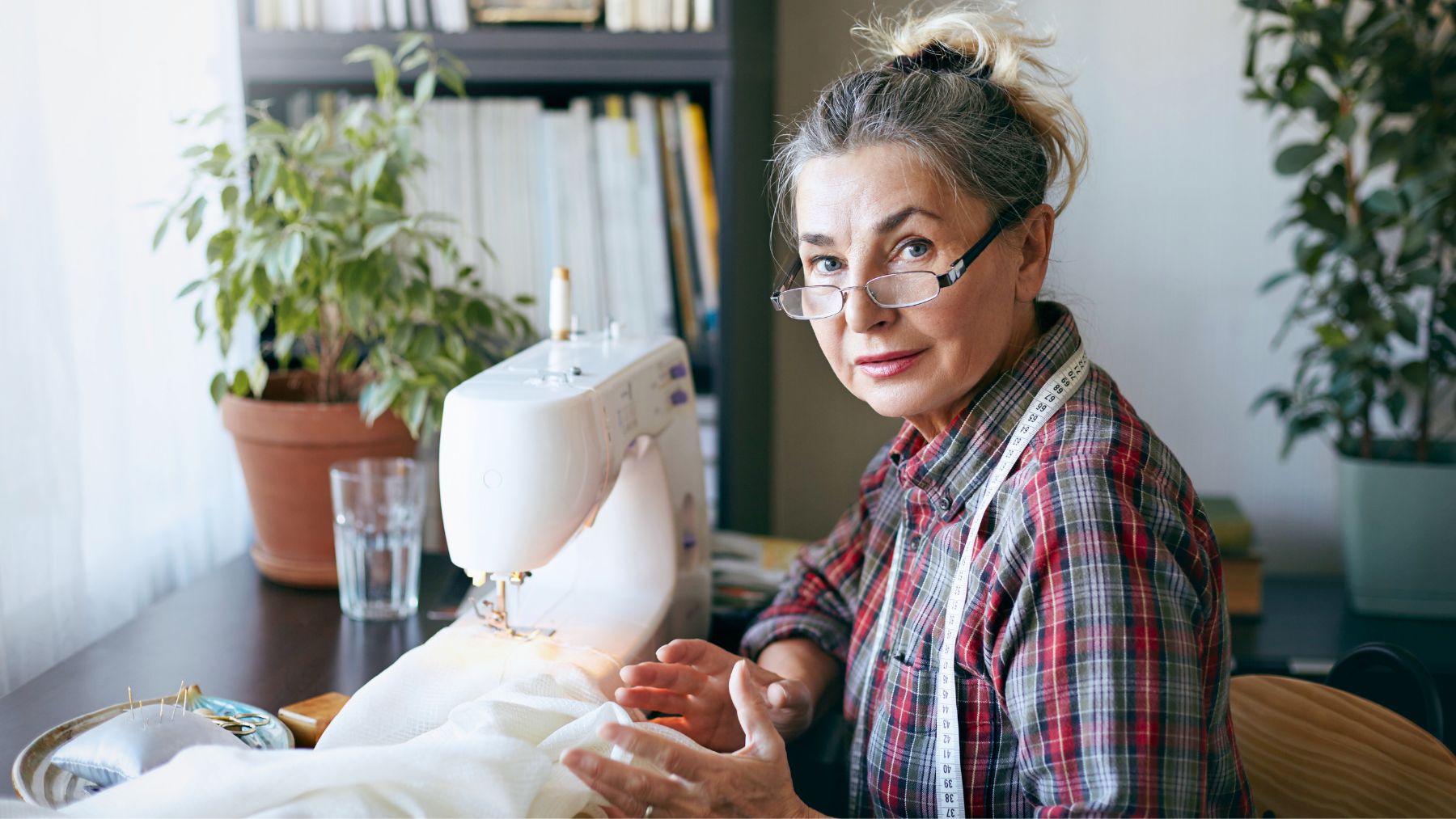Puzzles keep your mind busy, and gardening gets you outside, but there’s one quiet, hands-on hobby that has been proven to calm the nervous system, ease tension, and bring a steady rhythm back to your day. And it’s been around for generations.
We’re talking about knitting. Whether done with needles, a crochet hook, or a knitting machine, this simple craft combines repetitive motion, focus, and a sense of purpose in a way that can help alleviate anxiety and enhance mental clarity. Experts say knitting is the ideal hobby for people over 65, easing stress, boosting mood, and keeping the brain sharp. Here, we’ll look at why knitting stands out as a therapeutic tool, how it also supports physical and cognitive health, and how to get started without feeling overwhelmed.
Knitting: a hobby that can help reduce anxiety for seniors
Besides being a great creative pastime, for seniors, knitting can become a practical form of therapy. The steady, repetitive movement of working with yarn has effects similar to meditation, as it helps quiet the mind, lower cortisol (the stress hormone), and trigger the release of endorphins—those chemicals that promote relaxation and improve your mood.
These calming effects don’t stop at traditional knitting. Crocheting offers the same rhythm with a single hook, while machine knitting provides speed and precision, making it easier for those with limited hand strength. All three engage the brain and hands, helping to shift focus away from stress and toward the task at hand.
This hobby also activates short-term memory and spatial processing. Following patterns, counting stitches, and planning color changes challenge the brain to stay organized, focused, and mentally flexible—skills that help keep thinking sharp and responsive over time.
Besides, small, controlled hand movements help maintain joint flexibility and improve fine motor coordination. This can be especially helpful for those with arthritis or stiffness in the hands. Unlike more physically demanding hobbies, knitting is low-impact and can be done while seated, making it accessible for people with mobility challenges.
And finally, there’s the social benefit. Whether you join a local knitting group or follow online tutorials, the craft opens doors to conversation, shared projects, and creative exchange, offering a connection that reduces feelings of isolation.
Tips to start knitting with confidence after 65
Getting started doesn’t require expensive supplies or complicated projects. Here’s how to ease into the hobby:
- Choose the right tools: Start with medium-sized needles (or a basic crochet hook) and worsted-weight yarn. Avoid very fine or bulky yarns until you’ve built some comfort.
- Learn the basic stitches: For knitting, that means knit and purl. For crochet, it’s the chain stitch and single crochet. You can find free step-by-step videos online or ask for help at a local craft store.
- Start small: A scarf, dishcloth, or square is perfect for beginners. These projects help you practice without pressure.
- Work at your own pace: Don’t worry about speed or perfection. The goal is to enjoy the process, not rush the outcome.
- Join a group: Look for a community center, library, or online forum where people share ideas, troubleshoot problems, and support beginners.
- Be kind to your hands: Take breaks, stretch your fingers, and stop if you feel discomfort.
Knitting may seem like a simple craft, but it’s deeply restorative. It offers focus, calming repetition, and the joy of making something by hand. For anyone over 65 looking for a way to relax, stay sharp, and feel connected—without screens or strenuous activity—knitting might be the perfect choice.

